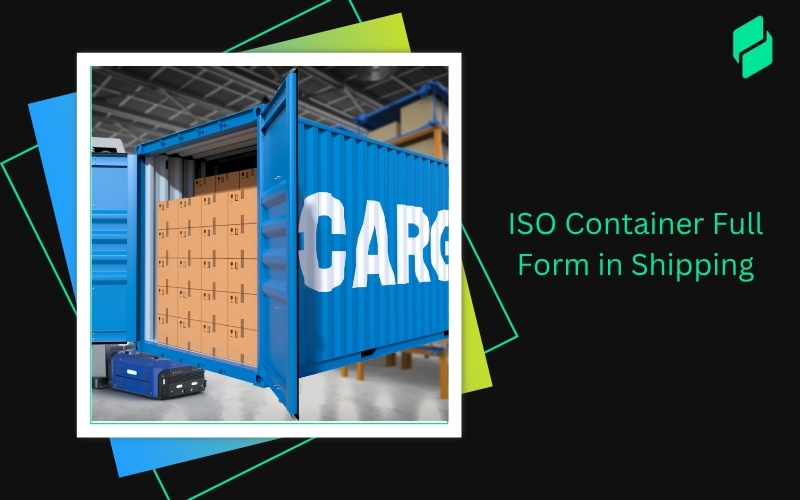Optimize your business: use unlimited savings with Pazago fulfilled now!
Get Started ->Every shipment is a story of journey and promise, and ensuring that the story ends well is crucial for businesses worldwide. Post-shipment inspection serves as a vital checkpoint, confirming that goods meet all specified criteria before they reach their final destination.
Recent data reveals a telling trend: in the first half of 2024, the average number of defects identified during post-shipment inspections climbed to 2.94 per inspection, up from 2.69 in the previous year.
Although the frequency of these inspections has marginally declined, their precision and effectiveness in pinpointing discrepancies have enhanced. This shift underscores the increasing importance of thorough post-shipment inspections, not just as a formality but as a critical safeguard within the international logistics and supply chain management processes.
As we delve deeper, we will explore post-shipment inspection's essential role in modern trade, highlighting why every stakeholder in the "import and export" sector should prioritise these assessments.
What is Post Shipment Inspection?

Post-shipment inspection is a critical examination conducted after goods have been shipped and before the buyer accepts them.
This inspection ensures that the delivered goods conform to the specifications agreed upon in the sales contract, offering a final assurance that the products meet the required quality and quantity standards.
The Significance of Post-Shipment Inspection
1. Conformity with Sales Contract Specifications
- A post-shipment inspection confirms that the products shipped by the seller meet the descriptions and specifications stated in the sales contract, safeguarding the buyer against discrepancies in quality, quantity, and functionality.
2. Inspection Upon Arrival
- Typically conducted at the port of discharge or the final destination, this inspection allows for immediate assessment of the goods upon arrival. It helps identify any damage, defect, or non-conformity with contract specifications that might have occurred during transit.
Also Read: Procedure and Steps in Pre-Shipment Inspection and Quality Control
Reasons for Requiring Post-shipment Inspection by Importers
Post shipment inspection serves as an essential safeguard for importers. While local inspections in the exporter’s country are valuable, they may not always capture the full picture, possibly due to biases or oversight.
Conducting an independent inspection upon arrival at the destination ensures that the goods are not compromised after leaving their origin. This level of scrutiny is crucial for maintaining transparency in freight forwarding and logistics, where the stakes are often high.
Let's dive deeper into the multifaceted benefits that post-shipment inspections bring to the table.
Benefits of Post-shipment Inspection
Eliminates Risk of Disputes About Quantity and Quality of Received Goods
A major advantage of conducting post-shipment inspections is its clear documentation, certifying that the received goods match the agreed specifications in quantity and quality.
This thorough verification process significantly reduces the likelihood of disputes between buyers and sellers, fostering trust and reliability in "import and export" transactions.
Prevents Fraudulent Shipment Activities, Especially When Combined with Pre-shipment Inspections
Integrating post-shipment with pre-shipment inspections creates a robust validation mechanism that is particularly effective in preventing fraudulent activities. This dual-layer inspection strategy ensures a comprehensive assessment, deterring substandard or incorrect goods shipment.
Such rigorous cargo inspection procedures and quality control measures are essential in sectors like Ocean Shipping and global supply chain management, where the impact of receiving non-compliant goods can be severe.
Enhanced Supplier Performance
When suppliers know that an inspection will occur after shipment, they are more likely to adhere strictly to quality guidelines and contractual terms. This not only improves product quality but also enhances their reliability and performance.
Cost Management
Companies can manage costs more effectively by identifying non-compliance and defects before the goods are integrated into the inventory or sold to customers. Dealing with issues at this early stage prevents the extensive financial drain associated with downstream problems.
Now that we've covered the benefits let's walk through the detailed process of conducting a post-shipment inspection.
Also Read: What is a Cargo Inspection Certificate: Types and Purpose
Process of Post-shipment Inspection
The procedure for conducting a post-shipment inspection is systematic and detailed. It ensures that all aspects of the shipment are thoroughly vetted before final acceptance, which is crucial for maintaining the integrity of international trade operations.
Application by Importer or Exporter (Applicant Company) to Independent Inspection Company
The process begins when the importer or exporter applies to an independent inspection company. This step initiates the formal request for inspection services, setting the stage for a thorough review of the goods upon arrival.
Filling Forms to Receive a Price Quotation
Upon application, the applicant is required to fill out detailed forms providing necessary information about the shipment. These forms help the inspection company understand the scope of inspection needed and provide an accurate price quotation for their services.
Inspection Company Prepares an Offer After Receiving Information
After reviewing the provided information, the inspection company prepares and submits an offer to the applicant. This offer details the inspection's scope, methodologies, and associated costs.
Acceptance of Offer and Payment of Inspection Costs by Applicant Company
Once the applicant reviews and accepts the offer, payment for the inspection is processed. This financial transaction secures the inspection services as per the agreed terms.
Pazago offers the added benefit of flexible payment options and transparent pricing.
Scheduling Inspection Date with Either Importer or Exporter
The next step involves scheduling the actual inspection date. This is coordinated with the relevant party, whether the importer or the exporter, to ensure that the inspection occurs conveniently when the shipment is accessible.
Assignment of Qualified Inspector Who Visits Inspection Site
A qualified inspector is assigned to the case and visits the inspection site on the scheduled date. These inspectors are typically highly trained professionals with expertise in specific types of cargo and international trade regulations.
Pazago employs industry-certified inspectors who are up-to-date with the latest standards and practices."
Sample Collection and Testing of Representative Goods
During the inspection, the inspector collects samples of the goods for detailed testing. This may involve laboratory analysis to verify quality parameters and ensure compliance with the sales contract.
Inspector Writes Report Indicating Conformity with Sales Contract
Finally, the inspector compiles a detailed report based on the findings. This report indicates whether the goods conform to the specifications outlined in the sales contract, providing a clear record for both parties involved.
Also Read: Role and Benefits of Pre-Shipment Inspection in Industrial Services
Shipments Suitable for Post-shipment Inspection

Post-shipment inspections are particularly relevant for certain types of shipments, where the stakes are high, and the integrity of the goods is crucial to the business relationship.
Bulk Cargo Shipments Such as Oil, Coal, Timber, Bulk Chemicals, and Bulk Food
These shipments often involve high-value commodities, where quality and quantity discrepancies can lead to significant financial losses. Post-shipment inspections ensure that such discrepancies are identified and addressed before the goods are accepted.
Not Practical for Containerized Shipments
The cost of post-shipment inspections may not be justified for smaller shipments, especially containerised ones. Other quality and quantity verification forms might be more cost-effective in these cases.
Inspection Techniques in Post Shipment Inspection
Here's a table format that organises the inspection techniques used in post-shipment inspections, making the information clear and accessible:
Also Read: Cargo Inspection and Unloading Procedures
Keeping these inspection techniques in mind, let's address some of the challenges and strategic solutions associated with post-shipment inspection.
Challenges with Strategic Solutions in Post Shipment Inspection

Navigating the complexities of global trade, post-shipment inspection plays a pivotal role in ensuring that international shipments meet contractual agreements. However, this crucial process faces several challenges that can undermine its effectiveness.
Challenge 1: Delayed Inspections
Problem: Delays in inspections due to logistical issues or scheduling conflicts can lead to increased storage costs and delayed goods release.
Strategic Solution: Implementing a more dynamic scheduling system for flexible inspection timings can mitigate these delays. Coordination with local logistics partners to streamline operations ensures that inspections are prioritised and conducted promptly upon cargo arrival.
Pazago's real-time tracking and trusted shipping partners help mitigate these delays, ensuring your cargo is inspected and released promptly.
Challenge 2: Inadequate Training of Inspectors
Problem: The inspection quality can suffer if inspectors are not adequately trained on the latest standards and technologies.
Strategic Solution: Continuous training programs are essential, especially in sectors that frequently update their standards, like electronics and pharmaceuticals. Partnering with accreditation bodies to certify inspectors regularly ensures a high level of competency in handling complex cargo inspection procedures.
Using Pazago’s global network of inspectors, you can ensure your cargo is inspected by experts who are up-to-date with the latest standards.
Challenge 3: Limited Access to Advanced Technology
Problem: In some regions, especially in developing markets, there needs to be more access to advanced technologies that facilitate thorough and efficient inspections.
Strategic Solution: Investing in mobile inspection technologies that can be deployed easily and are cost-effective. Establishing partnerships with technology providers can equip inspectors with tools like handheld scanners and mobile data collection devices that enhance the accuracy of shipment inspections.
Challenge 4: Fraud and Manipulation of Goods
Problem: There is a risk of fraud or manipulation of goods during transit, which can be difficult to detect at the point of inspection.
Strategic Solution: Combining post-shipment inspections with pre-shipment inspections and using tamper-evident seals can create a secure supply chain. Implementing RFID tags and GPS tracking provides real-time monitoring, significantly reducing the risk of tampering during Ocean Shipping.
Combining proactive alerts and GPS tracking through Pazago’s real-time tracking system ensures you are swiftly aware of discrepancies, maintaining a secure supply chain.
Challenge 5: Communication Barriers
Problem: Miscommunication between exporters, importers, and inspection agencies can lead to inconsistencies and errors during inspection.
Strategic Solution: Establish clear communication protocols and use integrated software solutions that allow real-time updates and reports to be shared among all parties involved. Training staff in cross-cultural communication and the industry's technical language enhances understanding and reduces errors in logistics.
Pazago’s centralised communication platform ensures all stakeholders are in sync, reducing miscommunication.
Challenge 6: Adherence to International Standards
Problem: Ensuring compliance with diverse international standards and regulations poses significant challenges.
Strategic Solution: Leveraging global networks of experts in freight forwarding and Import and Export who are familiar with international regulations. Regular updates and workshops on global trade compliance help keep the inspection teams informed and compliant.
Pazago’s extensive operations in over 110 countries ensure you have the support of experts familiar with global trade compliance.
Finally, let’s meet Pazago—a service that streamlines and enhances quality control with cutting-edge technology and industry expertise.
Introducing Pazago: Excellence in Import and Export Quality Control
Pazago is your definitive partner in quality control and customs clearance. It merges digital precision with expert oversight to ensure compliance and timely delivery worldwide.

Key Features of Pazago
- Real-Time Tracking: Monitor shipments across 180+ shipping companies, maintaining control from start to finish.
- Document Management: Streamline paperwork with all documents securely stored and instantly accessible.
- Customs Clearance: Expedite customs processes, reducing delays and enhancing efficiency.
- Proactive Alerts: Receive instant notifications to address potential shipment issues preemptively.
- Unified Communication: Keep all stakeholders in sync through a centralised communication platform.
- Reliable Shipping: Ensure timely deliveries with our trusted shipping partners.
- Cargo Inspections: Leverage our global network of inspectors to guarantee compliance and product quality.
Why Choose Pazago?
- Global Reach: With operations in 110+ countries, we support your international ventures seamlessly.
- Efficiency and Cost Savings: Reduce costs by 20% and halve turnaround times, optimising budget and operations.
- Scalability: Pazago scales with your growth, continually adapting to meet your expanding needs.

"Precision powers progress" 🌟—a principle Pazago embodies. Beyond managing cargo inspections and customs clearances, Pazago transforms and optimises every step of the import and export process. 🌍
Ready for a smoother operation? Visit Pazago to discover how to achieve peak efficiency in your supply chain.
Choose Pazago, where excellence is standard! 🏆


.png)








